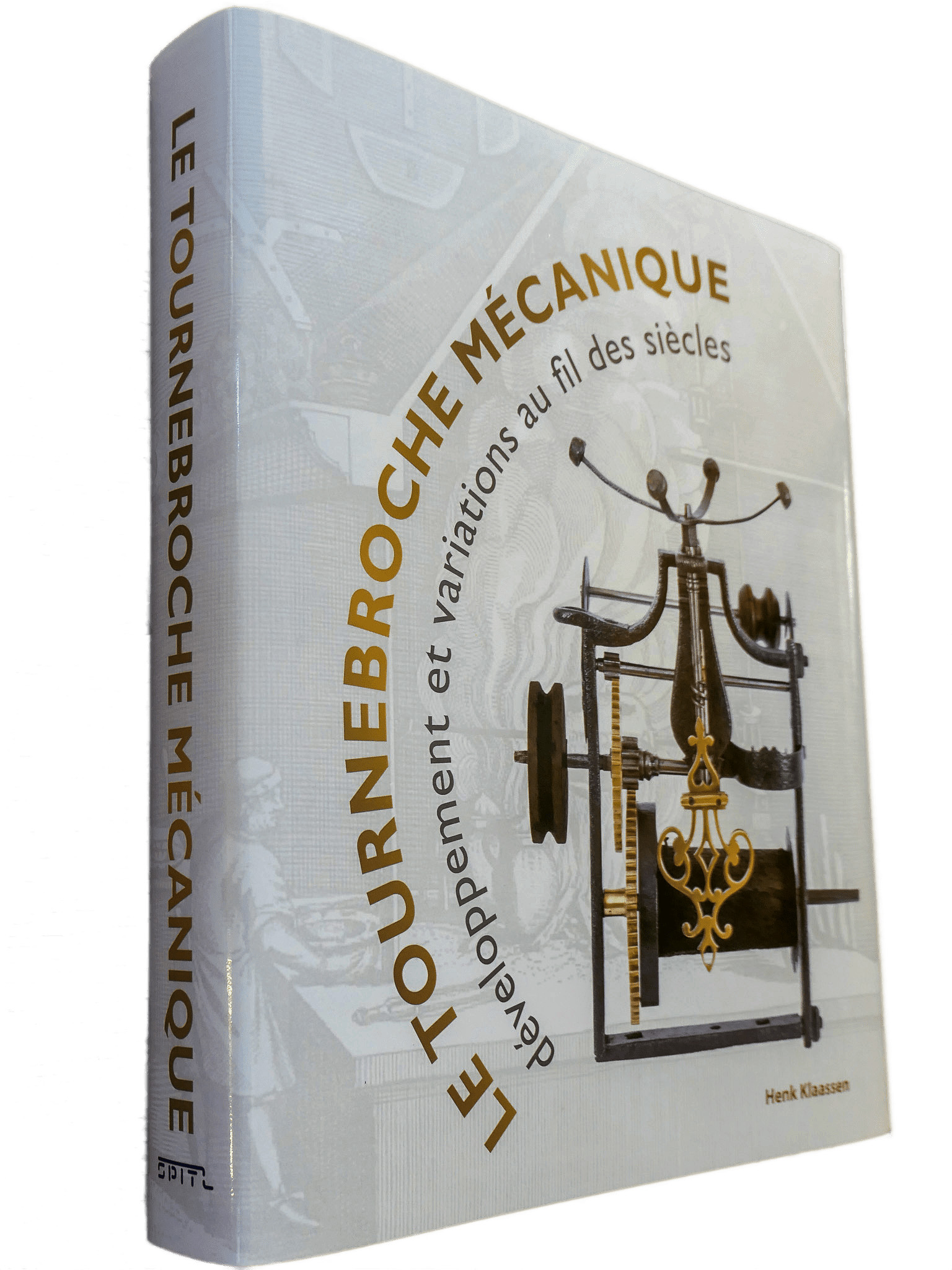Building on age-old cooking methods
Cooking in the fireplace is romantic, cosy and cool. And it does not depend on the weather, like barbecuing does. That is a big advantage. In addition, cooking on a wood fire gives the food a delicious flavor.
There are different ways to cook or grill in the fireplace. These methods are derived from the ways in which, in times when there was not yet a stove, cooking was done in the fireplace. In addition, use was made of all kinds of fireplace accessories.
Fireplace tools were necessary to properly regulate the fire for the preparation of the food. Fireplace accessories were also needed to prepare the food and to hang the food or the pan in front of the fire.
These antique fireplace accessories can still be used for cooking in the fireplace. The advantage of antique fireplace accessories is that these accessories are often beautifully made and attest to a great craftsmanship. It is also a nice idea to build on age-old cooking methods.
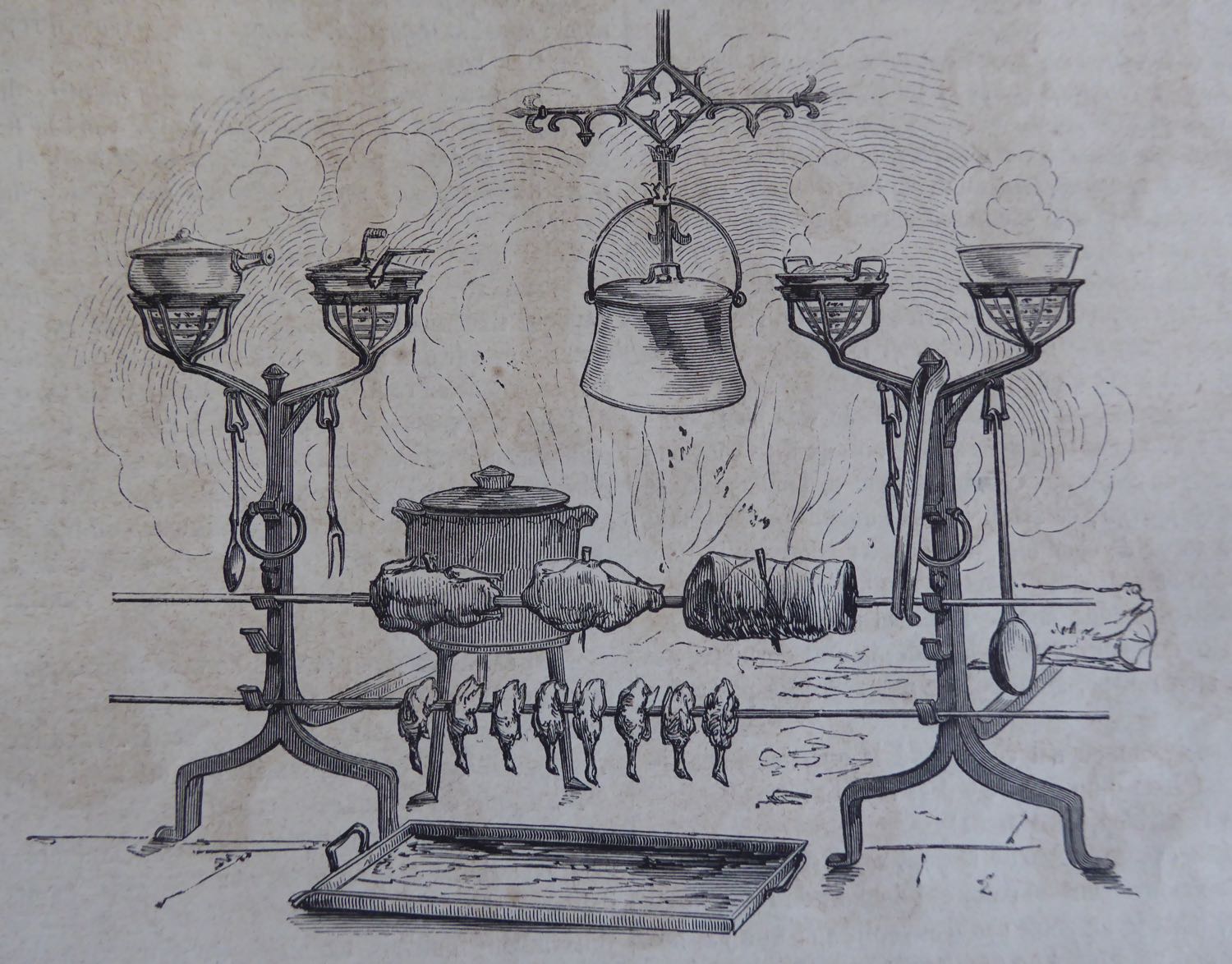
Before we begin
Many people think that cooking in the fireplace is literally cooking in the fire. But that is usually not the case. If the food, with or without pan, is placed directly above or in the fire, the food burns. Sometimes, that is necessary for frying food, or to bring the food to the boil, but in general, we cook in front of the fire or on top of glowing charred wood. Below is an explanation of how you can do this in different ways.
To cook in the fireplace, it is important that the fire can be properly regulated. A bit more fire is necessary if searing is needed, and less fire if you need to cook more gently. You also have to be able to scoop glowing coals out of the fire. Good fireplace tools are indispensable for this. In this article, you will find information about the fireplace tools you need: Which fireplace tools do you need?
Furthermore, there are kitchen accessories that were used for cooking in the fireplace, such as skimmers, (soup) spoons, spatulas and forks to see how well cooked the food was. These accessories were often made of wrought iron, copper or brass, or of a combination of these materials.
Grilling with a spit and andirons
Necessities:
- Two andirons with spit hooks at the same height or two spit racks with spit hooks at the same height
- Spit
- Dripping pan
- Thermometer for the meat
More information about andirons can be found in these articles: What is the purpose of andirons and fireplace grates? and 10 Tips for choosing a fireplace grate or andirons Please note that this method only works with andirons with spit hooks on both andirons that are set at the same height.
This method is suitable for grilling anything on the spit: a whole chicken, leg of lamb, fish in a fish spit, eggplant, vegetable skewer, etc. Create a warm fire that has been burning for some time. Shift the fire backwards so that the spit is in front of the fire and not in the fire. Also take into account your own safety when turning the spit.
Place the drip tray under the place where the spit will be. Thread the food onto the spit and place the spit on the spit hooks. Keep the fire reasonably warm for searing the food, and keep turning the spit regularly. Some spits have a convenient handle for this.
Lower the fire using a fireplace tool. Make sure the fire is hot enough to cook the food, but not so hot that the food will burn. A meat thermometer is very useful for determining when the meat is done for, for example, lamb or roast beef.
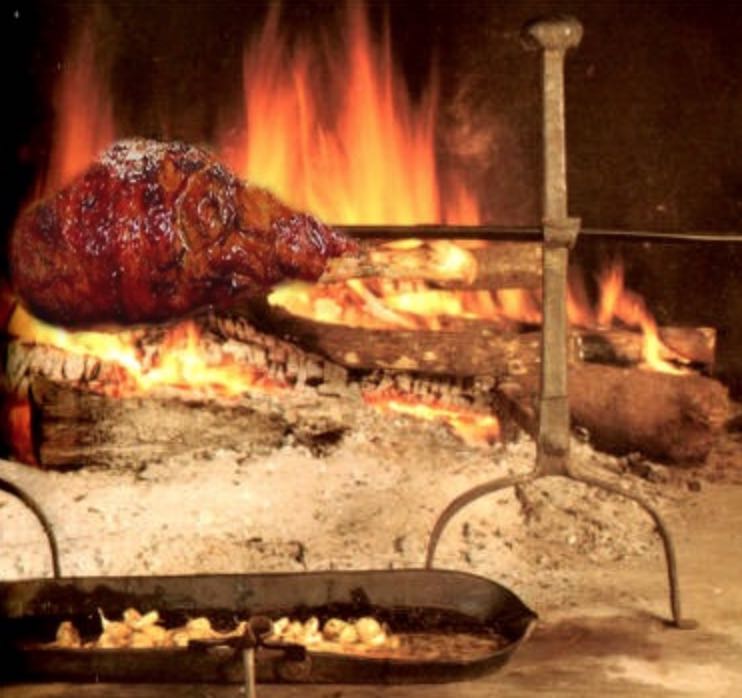
Grilling with a roasting jack
Necessities:
- Roasting jack with side support
- Spit
- Dripping pan
- Thermometer for the meat
A roasting jack is a small iron box containing a clock mechanism with a spring that can be wound with a key. A spit is inserted with one tip in the roasting jack and the other side placed on a support or the spit hooks of the andirons. The spit rotates gently due to the spring. This makes the food evenly brown and cooked.
This method is suitable for grilling anything on the spit: a whole chicken, leg of lamb, fish in a fish spit, eggplant, vegetable skewer, etc. Create a warm fire that has been burning for some time. Place the roasting jack in front of the fire. If you use andirons, that is just in front of the andirons. Place the drip tray under the place where the spit will be. Thread the food onto the spit and put one tip of the spit in the roasting jack and the other on the support.
Keep the fire reasonably warm for the roasting of the food. Lower the fire using a fireplace tool. Make sure the fire is hot enough to cook the food, but not so hot that the food will burn. A meat thermometer is very useful for determining when the meat is done for, for example, lamb or roast beef.
If you are interested in cooking with a roasting jack the following book may interest you: Le Tournebroche Mécanique (in French only)
In this video, Jamie Oliver cooks grills lamb with a roasting jack at home:
Grilling or cooking with a chain or a trammel hook
Necessities:
- Iron cross connection (from front to back) in the flue to which a chain or trammel hook can be hung. A fireplace crane was also used in fireplaces, which was fixed in a side wall of the fireplace. A number of pans can often be hung from this crane, with the aid of chains and/or trammel hooks. The crane can also often swivel, so that the position in the fire can vary even more and the pot or meat can easily be removed or hung. I
- Chain with a hook at the bottom and at the top, or a trammel hook. A trammel hook is a kind of elongated saw with a connection that ensures that the trammel hook can be set at various heights. This allows the distance from the food or the pan to the fire to be determined and thus the heat needed for the preparation.
- Strong wire (not plastic) or cast-iron pan (for roasting or braising or boiling) with a handle that can be hung on the chain or trammel hook.
- Dripping pan for grilling meat
- Poker with a hook to lift the lid of the pan with a stew or soup
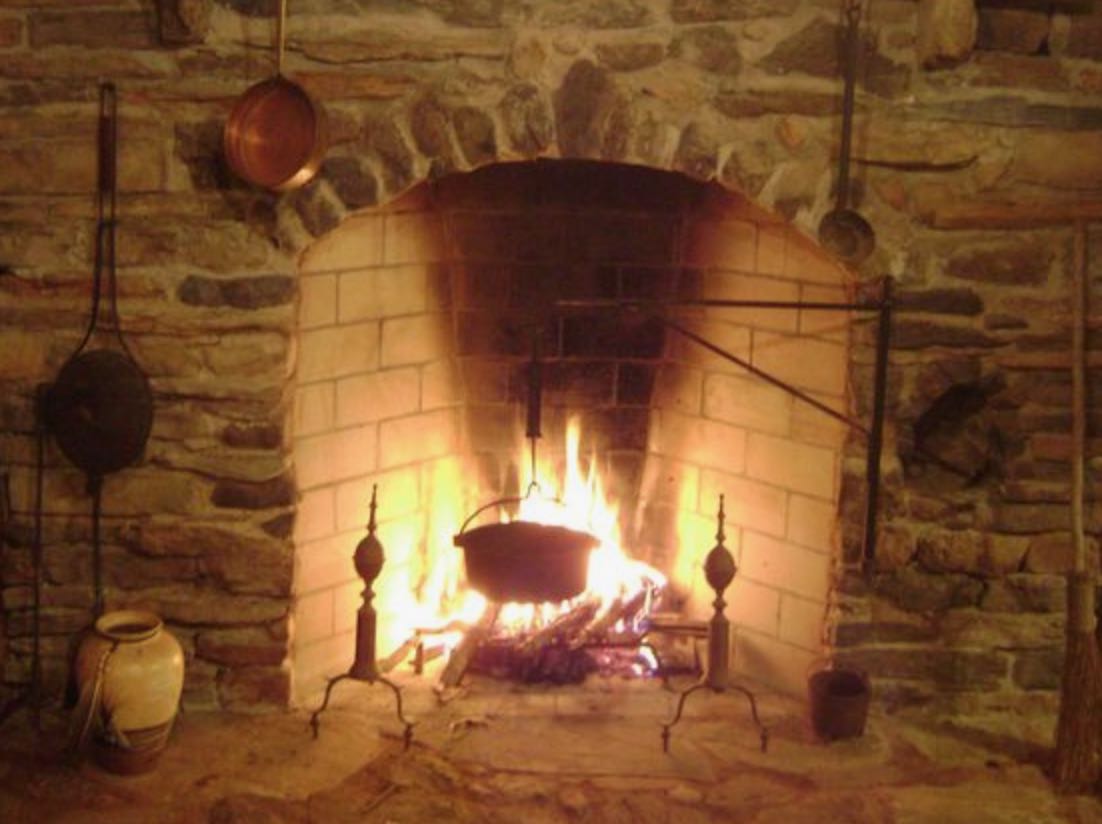
This method is suitable for hanging and roasting food on a wire above the fire. Very suitable for a whole chicken or a leg of lamb. If a pan is hung on the chain or trammel hook, then, for example, a stew or a soup can be prepared. See for example the following recipe: Recipe for grilling a chicken on a wire above the fireplace.
To grill the meat: attach the chain or the trammel hook to the front of the iron cross connection in the flue of the fireplace, so that the food can hang in front of the fire. Then prepare the fire and ensure that the fire has burned for some time. Prepare the meat. Wrap the wire well around the meat so that it stays in place when it is hung on a wire. In the case of a whole chicken, you only need to tie the legs together and attach the hanging wire to them. Then attach a long wire to the meat. Shift the fire backwards so that the meat hangs in front of the fire. Place the drip tray at the position of the chain or trammel hook in front of the fire. Hang the wire on the chain or trammel hook and make sure that the meat hangs in front of the fire. The height of the fire - and thus the heat - can of course be adjusted during preparation, depending on the required preparation. Rotate the wire with the meat so that the meat continues to turn in front of the fire. Keep repeating this regularly.
For stewing or boiling in a pan: fasten the chain or trammel hook in the middle of the iron cross connection in the flue of the fireplace, so that the pan can hang directly over the fire. Then prepare the fire and ensure that the fire has burned for some time. Prepare the stew or soup. Hang the pan on the hook of the chain or the trammel hook. Pay attention to the height of the fire in relation to the height of the pan. With a trammel hook, this can be adjusted in advance. To bring the food to a boil, the fire will be higher, and for stewing or gentle cooking, the fire will have to be lowered.
Use a poker with a hook to lift the lid.
Cooking with a trivet
Necessities:
- Trivet
- Cast iron pot, tadjine or cast-iron frying pan
- Poker with a hook to lift the lid of the pan
- Fireplace shovel to move glowing coals
- Possibly: a Blow poke
This method is suitable for boiling, roasting or braising in a (frying) pan or tadjine. In this way, multiple pans can also be placed on the glowing coals with the aid of trivets, if there is sufficient space in the fireplace.
A trivet is a round flat holder on legs and with a handle, which can be placed on the glowing coals and on which a pan can be placed. The trivets are available in different heights, depending on the preparation of the dish in relation to the height of the fire. In the past, there were also several trivets with different heights to choose from. There are also cast-iron pans with legs (Dutch ovens) that can be placed directly on the glowing coals. A trivet is then not necessary. There are also trivets with a handle that can be hung on a chain or a trammel hook and on which (frying) pans can be placed.
Prepare the food. Make sure the fire has burned long enough that there are glowing pieces of charcoal. Shift the glowing coals forward and the fire backwards. Put the trivet on the glowing coals. Prepare the food using a cast-iron (frying) pan or a tadjine. Pay close attention to the heat source. The heat can be varied by shifting more or fewer glowing coals under the trivet or by increasing the burning of the charcoal with the aid of a blowpipe.
Use a poker with a hook to lift the lid.
Cooking with a gridiron
Necessities:
- Gridiron
- Fireplace shovel to move glowing coals
This method is suitable for grilling all kinds of vegetables, shellfish and meat.
A gridiron is a rectangular flat holder with a grill on legs and with a handle, which is placed on the glowing coals. The gridirons are usually quite low because you have to grill close to the heat source.
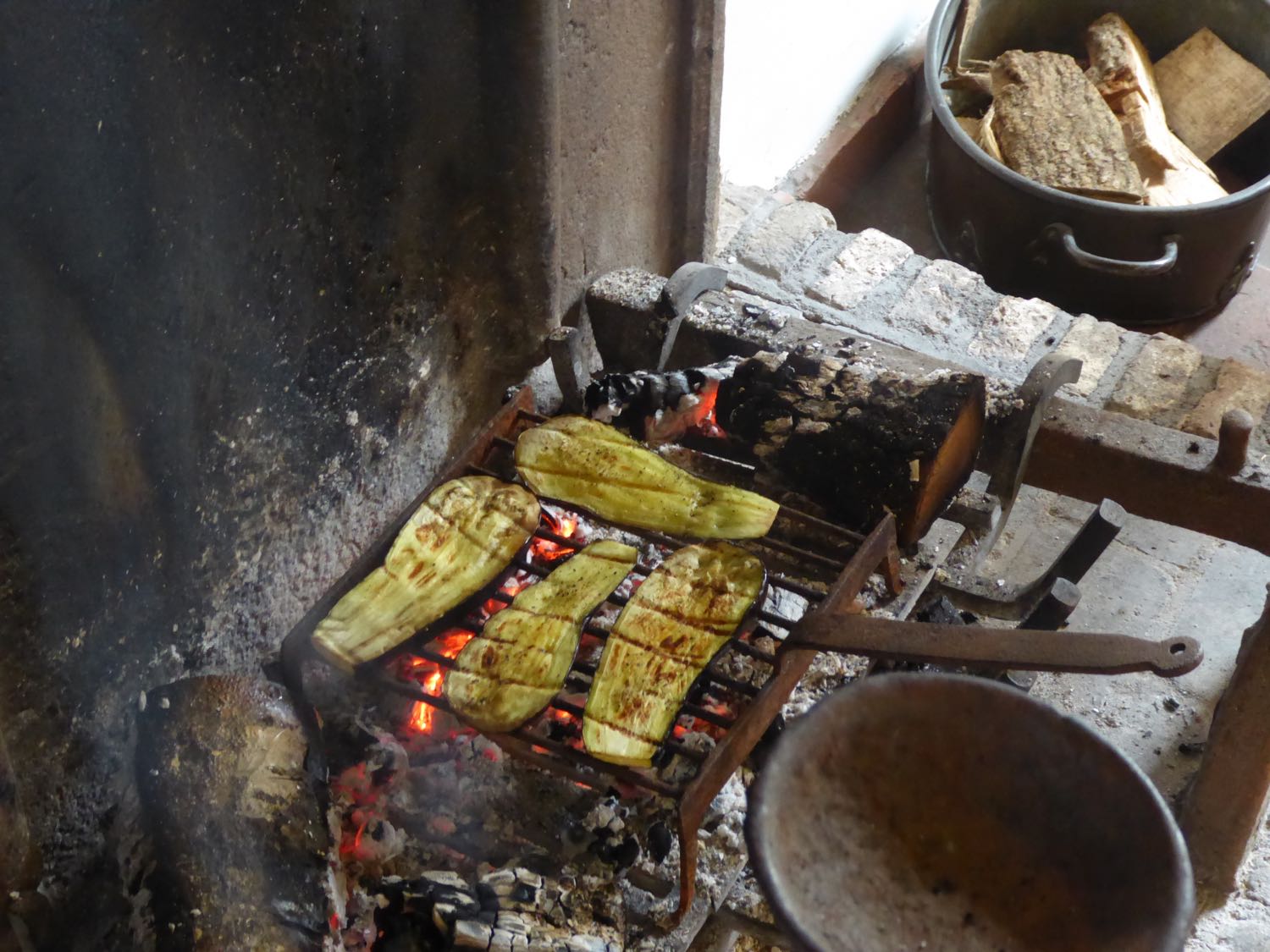
Prepare the food. Make sure the fire has burned long enough that there are glowing pieces of charcoal. Shift the glowing coals forward and the fire backwards. Place the gridiron on the glowing coals. If you are using andirons and a grate, it is possible to put the gridiron on the andiron grate. You then shift the burning wood to the side and put the gridiron in the middle of the andiron grate.
Pay close attention to the heat source. The heat can be varied by shifting more or fewer glowing coals under the gridiron. It is also possible to put the gridiron on a trivet, which increases the distance from the glowing coals. Once the food is on the gridiron, a blow poke can no longer be used, because then ash gets into the food.
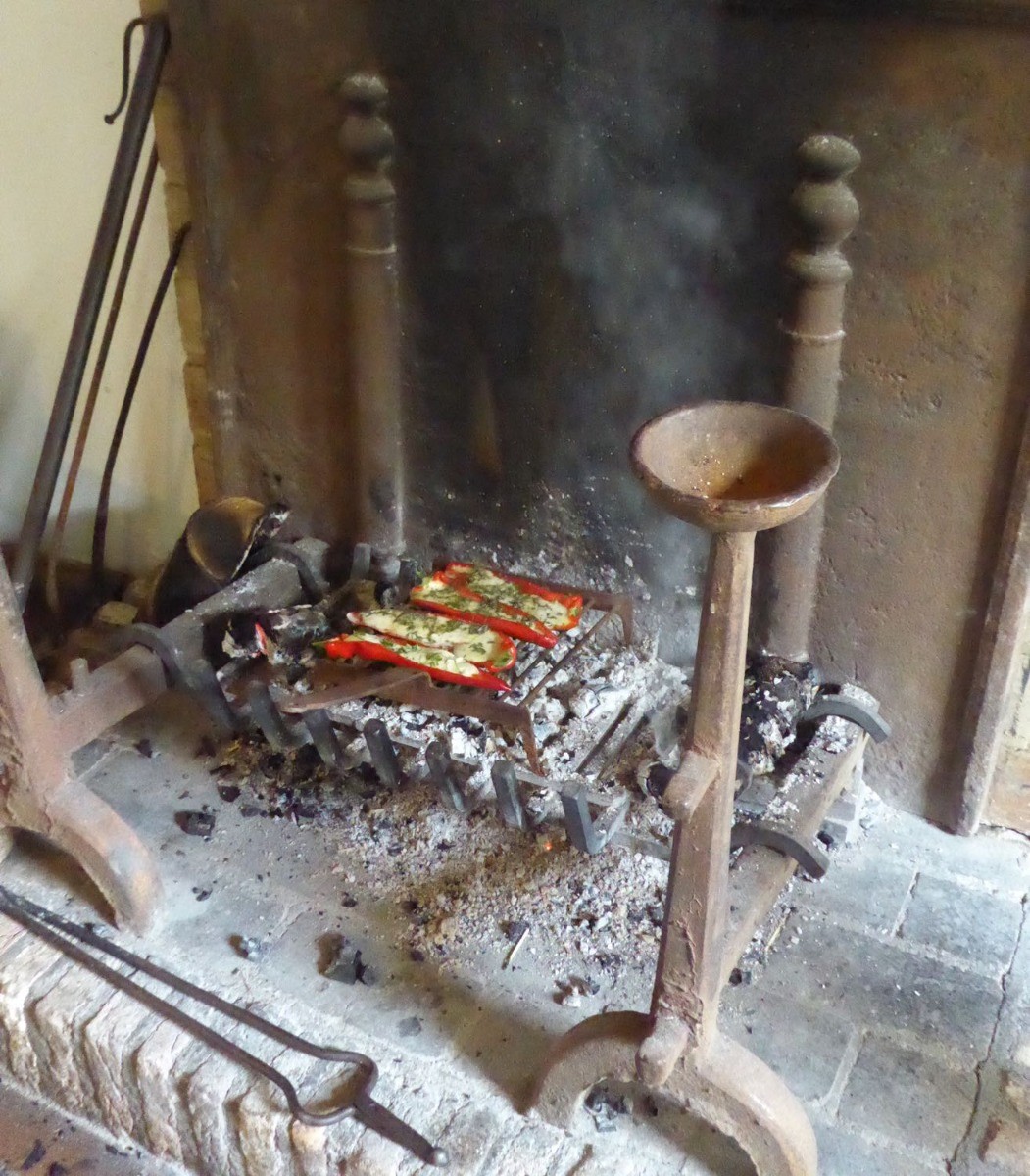
Cooking with a Dutch Oven
Necessities:
- Dutch Oven
- Fire poker with hook to remove the lid of the Dutch Oven
- Fireplace shovel to move glowing coals
- Possibly: a Blow poke
This method is suitable for stewing, boiling and baking food in a pan that can also function as an oven.
A Dutch oven is a cast iron pan on legs, usually with a lowered lid. The legs work like a trivet. Due to the lowered lid, glowing coals can be placed on the lid.
Prepare the food. Make sure the fire has burned long enough that there are glowing pieces of charcoal. Shift the glowing coals forward and the fire backwards. Place the Dutch Oven on the glowing ash and coal. Pay close attention to the heat source. The heat can be varied by shifting more or fewer glowing coals under the trivet or by increasing the burning of the charcoal with the aid of a blow poker.
If the Dutch oven is used as an oven, it is important to have an idea of the cooking time in advance because it is inconvenient to repeatedly remove the coal and ash from the lid. In doing so, you learn about the correct ratio of amount of glowing coals to the preparation time.
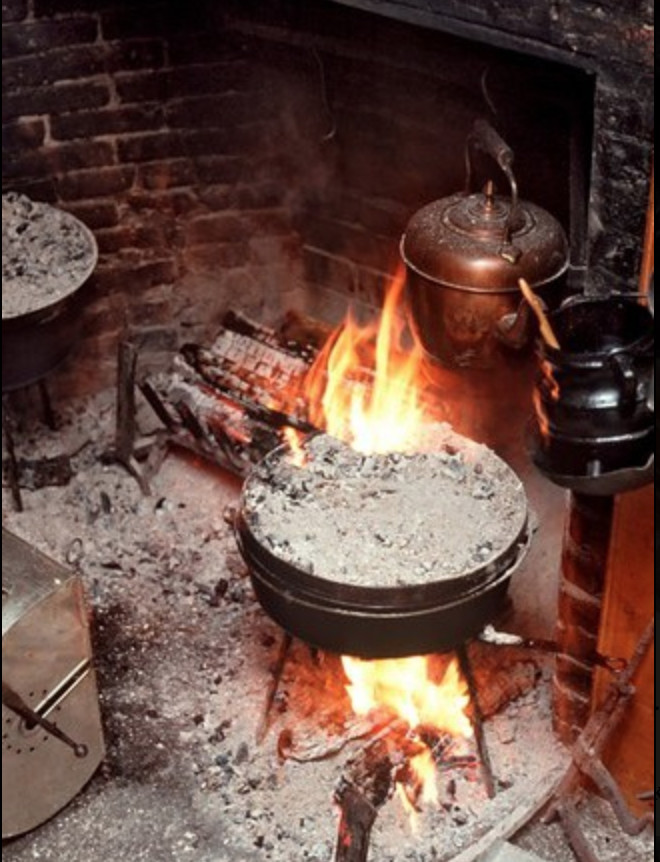
Other grilling methods
In addition to the above methods, there are also special fireplace accessories for preparing specific dishes.
- Roasting apples in a special apple holder (an apple grill) placed in front of the fire.
- Toasting bread in a special container for bread (a bread toaster) placed in front of the fire.
- Keeping beverages warm in the holders of the andirons that have these holders. These are called cup dogs.
- Cooking waffles with a waffle iron on a trivet in the glowing coals.
- Roasting potatoes in the tailor-made beam of a fireplace (potato roaster).
Recipes for cooking in the fireplace
- Video: Alain Passard And Ludo Lefebvre Make Brittany Lobster
- Recipe for grilling a chicken on a wire above the fireplace
- How to roast meat in an open fireplace
- Book: Open-Hearth Cookbook: Recapturing the Flavor of Early America
Restaurants that cook in the fireplace
Delicious video on the home page of restaurant Le Flamboire in Paris
References:
J. Seymour Lindsay (Iron and Brass Implements of the English House), 1927
Broom County Historical Society (The American Hearth: Colonial and Post-colonial Cooking Tools)
Colonial America: the simple life: Early American fireplaces and cooking
George Neumann (Early American Antique Country Furnishings), 1984
Browse our webshop
Browse here our current online stock of antique roasting jacks and clocks
Browse here our current online stock of antique trammels and chimney cranes
Browse here our current online stock of antique gridirons
Browse here our current online stock of antique trivets
Learn more
Antique kitchen utensils for cooking in the fireplace
Everything you need to know about antique roasting jacks
How do I decorate my fireplace?
Which fireplace tools do you need?
10 Tips to improve the chimney draft of the open fireplace
Nice gift ideas for fireplace lovers

